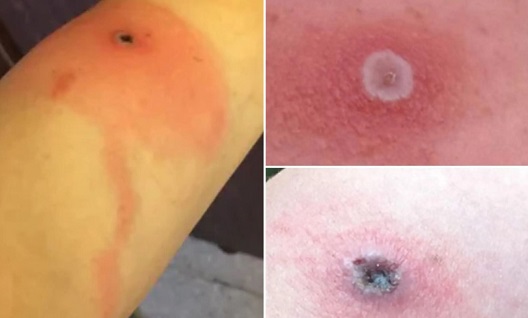Nikhil Prasad Fact checked by:Thailand Medical News Team Feb 12, 2024 1 year, 1 month, 2 weeks, 5 days, 18 hours, 14 minutes ago
Medical News: In the remote wilderness of Alaska, a recent and distressing incident has sent shockwaves through the medical community and raised concerns about the potential threat posed by a mysterious viral disease known as Alaskapox. This
Medical News report aims to delve deeper into the unfolding narrative surrounding the first documented death from Alaskapox, offering a comprehensive exploration of the virus's origins, transmission dynamics, diagnostic challenges, and the broader implications for public health.
 Fatal Incident Of Alaskapox Reported In Anchorage
The Emergence and Evolution of Alaskapox
Fatal Incident Of Alaskapox Reported In Anchorage
The Emergence and Evolution of Alaskapox
The Alaskapox virus, scientifically termed AKPV, made its debut on the medical radar in 2015 near Fairbanks, Alaska. Initially believed to be confined to the interior regions of the state, the recent fatality on the Kenai Peninsula, located south of Anchorage, has shattered previous assumptions about the virus's limited geographic reach. AKPV belongs to the orthopoxvirus family, a group of double-stranded DNA viruses known to infect various mammals, including humans. AKPV comes from the same genus as smallpox, monkeypox and cowpox.
Patient Profile: Unraveling the Immunocompromised Puzzle
The victim, an elderly man residing on the Kenai Peninsula, carried a medical history marked by immunosuppression due to cancer treatment. This underlying condition likely played a pivotal role in exacerbating the severity of his Alaskapox infection. The onset of his ordeal occurred in mid-September when he noticed a tender red papule in his right armpit, prompting multiple visits to medical professionals. Despite initial antibiotic treatment, his symptoms persisted and worsened, ultimately leading to hospitalization in November due to an extensive infection that significantly impacted the mobility of his arm.
https://epi.alaska.gov/bulletins/docs/b2024_02.pdf
Unraveling the Transmission Mystery
One of the perplexing aspects of this Alaskapox case is the uncertain source of the infection. The patient reported caring for a stray cat at his home, which had scratched him. Investigations are currently underway to ascertain whether the scratches from the feline played a role in transmitting the virus. Although the cat tested negative for Alaskapox, the possibility of transmission through its claws remains a focal point of exploration, adding a layer of complexity to the ongoing investigation.
Diagnostic Odyssey and Treatment Challenges
The diagnostic journey for the elderly man proved to be a labyrinthine process, taking months to confirm the presence of Alaskapox. Initial tests yielded positive results for cowpox, another orthopoxvirus, creating confusion in the diagnosis. Subsequent examinations by the U.S. Centers for Disease Control, however, revealed the true identity of the virus. Despite determined efforts to treat the infection with antiviral medication and immunoglobulin therapy, the patient's condition continued to deteriorate, culm
inating in his unfortunate demise in late January.
Geographic Spread and Collaborative Research
Previously perceived as localized to Alaska's interior, the recent incident on the Kenai Peninsula has prompted health officials to reevaluate the geographic distribution of Alaskapox. The Alaska Section of Epidemiology is now collaborating with the University of Alaska Museum and the CDC to conduct comprehensive tests on small mammals outside the Fairbanks region. This collaborative effort seeks to enhance our understanding of the virus's prevalence in different regions and identify potential reservoirs.
Lessons from Previous Cases: Tailoring Approaches to Vulnerable Populations
Before this fatal incident, reported Alaskapox infections had displayed mild symptoms, typically presenting as localized rashes and swollen lymph nodes in individuals with healthy immune systems. However, the case of the elderly man underscores the potential severity of Alaskapox in individuals with compromised immune systems, emphasizing the need for tailored approaches to treatment based on the patient's immunological status.
Recommendations and Precautions for Alaskapox
In response to the evolving situation, health officials are urgently calling for increased awareness among clinicians statewide. The Alaska Department of Public Health has issued nine recommendations for individuals suspected of having Alaskapox, emphasizing precautions such as avoiding touching lesions, keeping them dry and covered, and adhering to stringent hand hygiene practices.
Conclusion: Navigating the Complexities of Alaskapox
The discovery of the first fatal Alaskapox case outside the Fairbanks region serves as a somber reminder of the persistent challenges posed by emerging viral diseases. As health officials intensify efforts to unravel the mysteries surrounding Alaskapox, this incident prompts a reevaluation of our understanding of the virus, its transmission routes, and the potential risks it poses to vulnerable populations. With increased awareness, collaborative research initiatives, and a commitment to comprehensive public health measures, the medical community aims to navigate the complexities of Alaskapox and mitigate its impact on the health and well-being of Alaskans and beyond.
For the latest
Medical News, keep on logging to Thailand Medical News.
